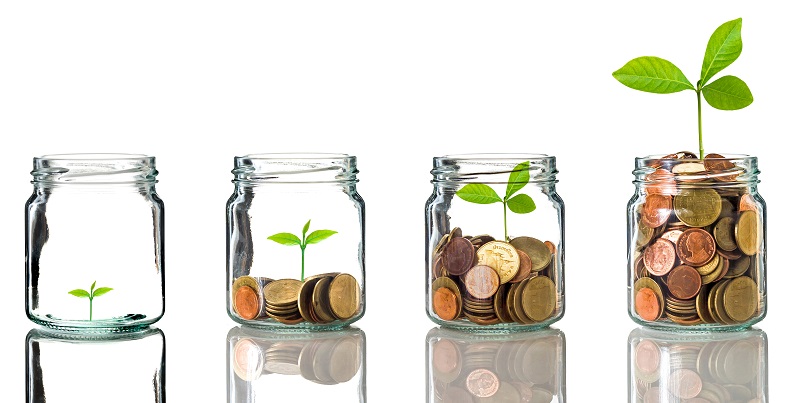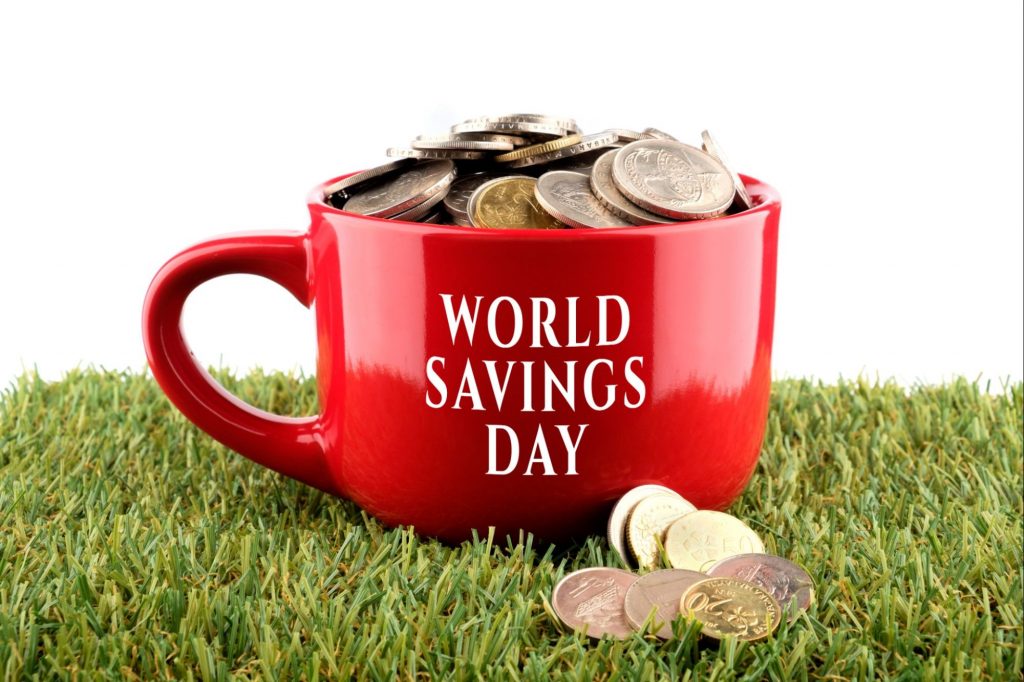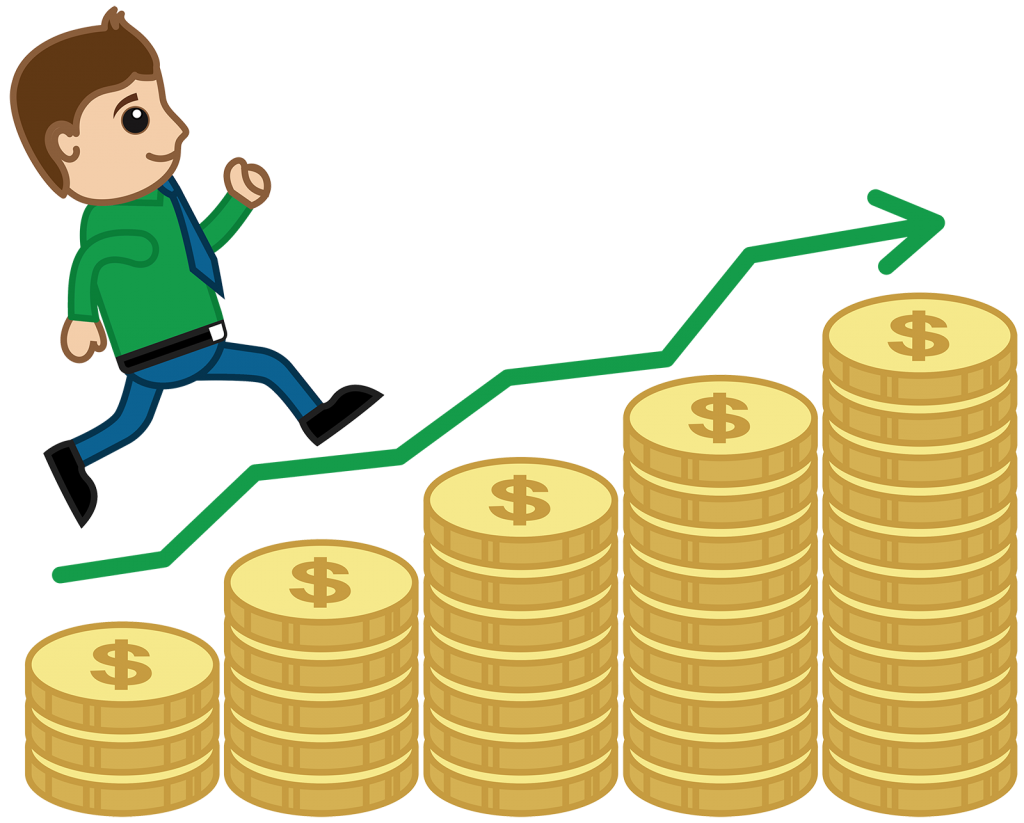If there’s one important thing other than being healthy that this pandemic has taught people, it’s the value of savings.

While the importance of saving money for a rainy day is rarely disputed and probably the most basic piece of financial advice that every single one of us have heard over and over again, many are still not following through on that tip. Knowing that you should save just isn’t enough for many people.
Of course there have been efforts worldwide to underscore the importance of savings and encouraging people to develop good financial habits. There’s even an international holiday assigned to it. In 1924, October 31st was declared World Thrift Day at the end of the first International Thrift Congress in Milan. This holiday was later renamed to World Savings Day.

SAVE UP!
SAVE UP, so when a need or something unprecedented arises like this pandemic or a global recession, we have something in our pockets to help us survive. But how can one save if there is just enough?
If you’re barely earning to pay your bills, the idea of saving is often laughable. When you only have a dollar left, then why bother? Right?
Wrong.
It’s really hard to do something without understanding why you should put in all that effort in the first place. Saving money takes discipline and a certain amount of sacrifice. But it will be worth all the effort because fundamentally, the value of saving is rooted on three major benefits:
- PEACE OF MIND – knowing that you’ll have something stored for emergencies
- FREEDOM – knowing that you’ll have something stored that’ll give you more options
- SECURITY – knowing that you’ll always have something to build your future
But to have those benefits, you’ll need to start somewhere right? Now how’s about that bottom dollar? I know that it’s not a lot right now but if you work at it, your financial situation is likely to improve over time. It’s like what they say, when you’re at the bottom – there’s no other way but UP.
SAVE NOW
Knowing why you should save is half the battle, the other half is knowing the best way to do it. Here are some of the best tips shared by people who have already mastered the art of saving money:
KEEP TRACK OF YOUR FINANCES
The first thing you need to do to help you save is to find out where all your money goes. For this, you need to write everything. There are actually a fantastic resource of free mobile apps online that can help you keep track of all your income and expenses. The main thought behind this is to identify and eliminate wasteful spending habits in your life. Consistently tracking your expenses will help you maintain control over your spending and promote better financial habits like saving and investing.

SET GOALS
Financial goals are where you want to be with your money in the next 5, 10, and 20 years. This will not help you with the process of saving money, but writing them down will serve as a reminder and a motivation. Be flexible and realistic with your goals and take into consideration external factors that might cause you to deviate from it.
BUDGETING IS THE KEY
Budgeting can sometimes be overwhelming but there are a couple of ways to make things a little bit more simple. These methods not only teaches you discipline but also gives you an easier time to map out your budget plan, and ensures that your monthly income is spent equally in terms of importance and benefits.
50/30/20 RULE
The idea is to allocate 50% of your income on your basic needs like food, and utilities; 30% on your wants like shopping, travel plans, and hobbies; and 20% on your savings.
INCOME MINUS SAVING RULE
The usual way people budget their money is by taking away projected expenses and allowances on income first and putting whatever that’s left (if there’s any) on savings. So the equation is:
Income – Expenses = Savings
But people who desire to prioritize savings over spending may also re-arrange the equation to this.
Income – Savings = Expenses
What this means is that the moment you draw your salary, you allocate the money towards savings and spend whatever is left after. This is an ideal method for those who have already set financial goals and have a fixed monthly expenses. You may also take advantage of Automatic Savings Plan offered by some banks to help you with this endeavor because saving money is best when you’re half-aware that you’re actually doing it.
You may also use a savings calculator tool online to find out how much money you will have saved up during a set investment period in a high yield savings account. I recommend you check out savingscalculator.org to help you with this.

You just enter your initial amount for your savings, then enter the interest rate along with how long you tend to go with the investment.
Next enter how much money you intend to deposit or withdrawal periodically. If this calculation is for a lump sum deposit with no recurring transactions enter “Never” in the “add money” drop down.
Once you have entered this information the calculator will inform you of how much money you will have saved up before income taxes, how much income tax you’ll owe and what the remaining amount of money is worth in real terms after accounting for inflation. Calculations update automatically when any input is changed.
Alternatively, if you have a particular savings goal you want to reach by a specific date then you may also use the savings goal calculators.
Ultimately, the biggest advantage of these budgeting methods is that it puts a limit to unnecessary spending. Your budget should outline how your expenses measure up to your income—so that you could plan your spending and limit overspending. Once you have your budget under control, you will be better positioned to ensure that your spending habits live with your saving goals.
BE A SMART SPENDER
And speaking of spending, here are a few tips on how make money work for you and not the other way around:

- Avoid Impulse Buying – The ease of online shopping makes this habit even harder to resist. Retailers know exactly which buttons to push to persuade people to click “Buy Now” – To avoid this is simple, don’t fall for the “Buy Now” scheme and if you saw an item that you think you need or like just “Add To Cart” and then leave it there for a day or two before making a decision. Many people who did this realize that most of the items in their carts are things they don’t actually want or need.
- Limit Credit Card Use and Avoid Late Payments – Another thing that’s really hard resist is the use of plastic cards when purchasing products online and offline. But what people needs to know is that credit cards are not actual money – it’s a debt with interest. Focusing on reducing your debt is one of the best ways to improve your financial profile. Set smaller limits for your credit card so it’s more manageable and avoid late payments. These fees may not seem like much at the start, but it’s money that could be better used elsewhere—especially if it becomes a habit.
- Go For a Win-Win – Before spending, think hard first if it’s something you’ll be using for a long time. The next thing you should consider is where to buy it and how to pay for it so you can get your money’s worth. Take advantage of discounts, sales or promos. Be practical and spend according to your means.
“He who buys what he does not need, steals from himself.”
Swedish Proverb
If your finances aren’t where you’d like them to be, now is the time to start making changes. The only way to go is to save and make whatever you have now grow. It’ll require a lot of discipline and patience but again, it will be worth it!
“You don’t have to see the whole staircase, just take the first step.”
Martin Luther King, Jr.
- Google to Use DHL Express GoGreen Plus Service - July 27, 2024
- Taiwan at the Forefront of Green Economy - July 26, 2024
- Discover Tohoku in the Summer - July 25, 2024







